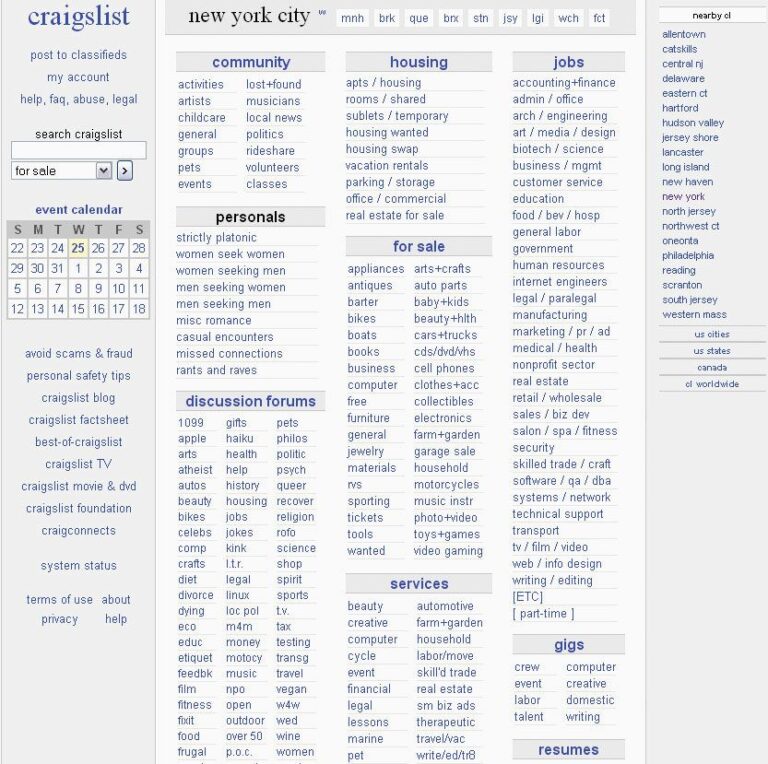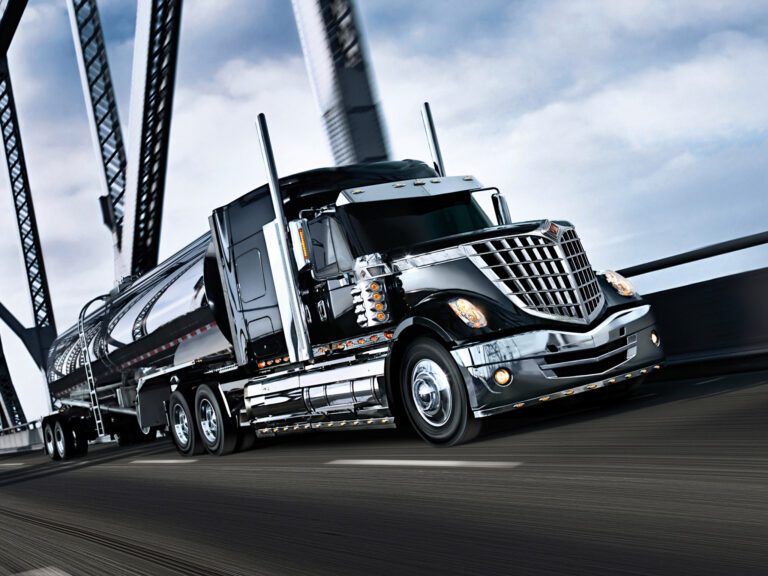Dump Truck Blue Book Value: Your Comprehensive Guide to Valuation
Dump Truck Blue Book Value: Your Comprehensive Guide to Valuation cars.truckstrend.com
In the robust world of heavy machinery, a dump truck is far more than just a piece of equipment; it’s a vital asset, a workhorse that underpins countless construction, mining, and logistical operations. Whether you’re looking to buy, sell, insure, or finance one, understanding its true market worth is paramount. This is where the concept of "Dump Truck Blue Book Value" comes into play. Far from being a single, definitive price tag, it represents an estimated market value derived from various industry benchmarks and a multitude of influencing factors. Grasping this value is critical for making informed decisions, ensuring fair transactions, and protecting your investment.
This comprehensive guide will delve into the intricacies of dump truck valuation, exploring what "Blue Book Value" truly means in this context, the myriad factors that shape it, how to accurately determine it, and practical strategies to maximize your truck’s worth.
Dump Truck Blue Book Value: Your Comprehensive Guide to Valuation
What is the Dump Truck Blue Book Value? Unpacking the Concept
The term "Blue Book Value" originated from the automotive industry, specifically Kelley Blue Book. However, for heavy equipment like dump trucks, it’s a broader, more generalized term referring to established valuation guides and market data sources. These resources provide estimated values based on past sales, current market conditions, and the specific characteristics of the equipment.
For dump trucks, the primary "Blue Book" equivalents are typically:
- JD Power Commercial Truck Guides (formerly NADAguides): Widely recognized in the commercial vehicle sector, these guides offer wholesale and retail values for various truck types, including dump trucks, based on make, model, year, and specifications.
- EquipmentWatch (formerly Iron Solutions): Another leading provider of heavy equipment valuation data, offering insights into market trends, depreciation, and actual selling prices.
- Auction Results Data: Platforms like Ritchie Bros. Auctioneers, IronPlanet, and other industrial auction houses provide a wealth of transactional data, reflecting real-world market values achieved through competitive bidding.

Understanding these values is crucial for several stakeholders:
- Buyers: To ensure they are paying a fair price and not overspending.
- Sellers: To price their truck competitively and maximize their return.
- Lenders: To assess collateral value for financing and loans.
- Insurance Companies: To determine appropriate coverage amounts and settlement values in case of loss.
- Appraisers: To provide professional, unbiased valuations.

Key Factors Influencing Dump Truck Blue Book Value
A dump truck’s value is a dynamic figure, shaped by a complex interplay of internal and external factors. Neglecting any of these can lead to significant miscalculations.

- Age and Mileage/Hours: This is arguably the most significant depreciation factor. Newer trucks with fewer miles or engine hours typically command higher values. Hours are often more relevant for heavy equipment as they indicate engine wear irrespective of road travel.
- Make and Model: Reputable manufacturers like Kenworth, Peterbilt, Mack, Freightliner, Volvo, and Western Star often retain higher values due to their proven reliability, parts availability, and strong dealer networks. Specific models within these brands can also have varying demand.
- Engine and Drivetrain: The power, efficiency, and reliability of the engine (e.g., Cummins, Detroit Diesel, PACCAR) and the transmission type (manual vs. automatic, number of gears) heavily influence performance and, consequently, value. Axle configurations (e.g., 6×4, 8×4) also play a role depending on the intended use.
- Condition (Physical & Mechanical): This is paramount.
- Physical: Rust, dents, paint condition, interior wear, tire tread depth, and functional lights/mirrors all impact cosmetic appeal and perceived reliability.
- Mechanical: The health of the engine, transmission, hydraulic system (for the dump body), brakes, suspension, and electrical system are critical. Any known issues or pending repairs will significantly devalue the truck.
- Maintenance History: A well-documented history of regular servicing, preventative maintenance, and timely repairs adds immense value. It demonstrates responsible ownership and provides assurance to potential buyers about the truck’s longevity.
- Specifications and Features:
- Dump Body Type: Steel (durable, heavy) vs. aluminum (lighter, higher payload capacity) affects suitability for different materials.
- Capacity: The volume (cubic yards) and payload capacity (tons) directly relate to the truck’s utility and potential earning power.
- Lift System: Hoist type and functionality.
- Specialty Features: Plow mounts, spreaders, specialized suspensions, or advanced telematics systems can add value depending on the market.
- Geographic Location: Regional demand for dump trucks varies. For example, areas with booming construction may see higher prices. Climate can also affect value, as trucks from regions with harsh winters might show more rust.
- Market Demand & Economic Conditions: The overall health of the construction, infrastructure, and mining sectors directly impacts demand for dump trucks. Economic downturns or slowdowns in these industries can depress values.
- Aftermarket Modifications/Add-ons: While some additions (like specialized safety features) can enhance value, others that are not universally desired or poorly installed can detract from it.
How to Determine Your Dump Truck’s Blue Book Value
Determining an accurate "Blue Book Value" requires a multi-faceted approach, leveraging various resources and expert insights.
-
Utilize Online Valuation Tools:
- JD Power (formerly NADAguides): Visit their commercial truck section. You’ll typically input the truck’s year, make, model, engine type, transmission, mileage/hours, and a detailed list of features and condition. It will then generate an estimated wholesale and retail value.
- EquipmentWatch: Similar to JD Power, EquipmentWatch offers detailed valuation reports. These services usually require a subscription.
- Process: Be as accurate and detailed as possible when inputting your truck’s specifications. Small discrepancies can lead to significant value differences.
-
Review Auction Results:
- Websites like Ritchie Bros. Auctioneers and IronPlanet provide extensive archives of past auction results, including prices realized for specific makes, models, and conditions of dump trucks.
- Benefit: This provides real-world transaction data, reflecting what buyers are actually willing to pay in a competitive environment. Look for trucks with similar specifications and condition to yours.
-
Consult Dealerships:
- Many commercial truck dealerships offer appraisals, especially if you’re considering a trade-in. While their primary interest is often to buy your truck at wholesale, they can provide a professional estimate.
- Tip: Get appraisals from a few different dealers to compare.
-
Engage Independent Appraisers:
- For high-value trucks, unique configurations, or situations requiring a certified valuation (e.g., legal disputes, estate planning), a professional heavy equipment appraiser is the best option. They conduct thorough inspections and provide comprehensive reports.
-
Compare Similar Online Listings:
- Browse popular online marketplaces like TruckPaper.com, CommercialTruckTrader.com, and local classifieds.
- Method: Find trucks that closely match your make, model, year, mileage/hours, and features. Be realistic about condition differences. Remember, asking prices are not always selling prices. This method helps gauge the retail market.
-
The Importance of a Detailed Inspection:
- No matter which method you use, the true value hinges on the truck’s actual condition. A pre-purchase inspection (PPI) by a qualified mechanic is crucial for buyers. For sellers, a clear understanding of their truck’s mechanical state allows for accurate pricing and transparency. Address any major mechanical issues before valuation if possible.
Maximizing Your Dump Truck’s Value
Whether you’re selling soon or just want to protect your investment, several strategies can help maximize your dump truck’s "Blue Book Value."
- Adhere to a Strict Maintenance Schedule: This is non-negotiable. Regular oil changes, filter replacements, fluid checks, and timely repairs extend the life of components and prevent costly breakdowns. Keep meticulous records of all service.
- Maintain Cosmetic Upkeep: A clean, well-presented truck signals responsible ownership. Wash and detail regularly, address minor dents and scratches, touch up paint, and prevent rust, especially in the dump body and frame.
- Address Issues Promptly: Don’t let small problems fester. A minor oil leak or a strange noise can quickly escalate into a major, value-depreciating repair if ignored.
- Keep Comprehensive Documentation: Service records, original manuals, the truck’s title, and any records of major repairs or component replacements are invaluable. They provide proof of care and history to potential buyers.
- Strategic Upgrades: While not all upgrades add value, some can be beneficial. Upgrading tires, lights, or adding universally desired safety features might yield a return. Avoid highly specialized modifications unless you’re targeting a very specific niche buyer.
- Time Your Sale: The market for heavy equipment can be seasonal. Selling during peak construction seasons (spring/summer) might yield better prices due to higher demand.
Challenges and Considerations
While understanding "Blue Book Value" is empowering, there are challenges:
- Market Fluctuations: Economic shifts, changes in commodity prices, and infrastructure spending can cause dump truck values to fluctuate rapidly.
- Niche Specifications: Highly specialized dump trucks (e.g., those designed for specific mining operations) might have a smaller buyer pool, potentially impacting liquidity and value.
- Salvage/Damaged Trucks: Trucks with significant damage or salvage titles will experience substantial depreciation, often falling outside standard valuation guides.
- Financing and Insurance Discrepancies: Lenders and insurance companies might use slightly different valuation methods or guides, leading to potential discrepancies between your estimate and theirs. Always clarify their chosen valuation source.
Illustrative Dump Truck Value Range Table
It’s crucial to understand that a definitive "Blue Book Value" table is impossible to provide due to the dynamic nature of the market and the vast number of influencing factors. The table below offers illustrative ranges for common types of dump trucks based on general condition and age. These are approximate figures for guidance only and do not represent actual market values. Always consult professional valuation tools and current market data for precise figures.
| Year | Make/Model (Illustrative) | Capacity (Approx.) | Condition: Good | Condition: Fair | Condition: Poor |
|---|---|---|---|---|---|
| 2020 | Generic Tandem Axle Dump Truck | 16-20 Cubic Yards | $85,000 – $120,000 | $65,000 – $84,000 | $40,000 – $64,000 |
| 2018 | Generic Tandem Axle Dump Truck | 16-20 Cubic Yards | $65,000 – $95,000 | $45,000 – $64,000 | $25,000 – $44,000 |
| 2015 | Generic Tandem Axle Dump Truck | 16-20 Cubic Yards | $40,000 – $60,000 | $25,000 – $39,000 | $15,000 – $24,000 |
| 2012 | Generic Tandem Axle Dump Truck | 16-20 Cubic Yards | $25,000 – $40,000 | $15,000 – $24,000 | $8,000 – $14,000 |
| 2008 | Generic Tandem Axle Dump Truck | 16-20 Cubic Yards | $15,000 – $25,000 | $8,000 – $14,000 | $3,000 – $7,000 |
| 2020 | Generic Tri-Axle Dump Truck | 20-25 Cubic Yards | $100,000 – $150,000 | $80,000 – $99,000 | $50,000 – $79,000 |
| 2015 | Generic Tri-Axle Dump Truck | 20-25 Cubic Yards | $60,000 – $85,000 | $40,000 – $59,000 | $25,000 – $39,000 |
Note: "Good" implies excellent mechanical condition, minimal wear, good tires, and clean appearance. "Fair" implies serviceable condition with some wear, minor cosmetic flaws, and average tires. "Poor" implies significant mechanical issues, heavy wear, cosmetic damage, and potential need for major repairs.
Frequently Asked Questions (FAQ) about Dump Truck Blue Book Value
Q1: Is "Blue Book Value" the only factor I should consider when buying or selling a dump truck?
A1: No, it’s a crucial guide, but not the only factor. Market demand, regional specifics, your negotiation skills, and the urgency of the sale can all influence the final transaction price. Always combine "Blue Book" data with real-world comparable sales and a thorough inspection.
Q2: How often do dump truck values change?
A2: Values are dynamic and can change frequently, influenced by economic conditions, construction activity, fuel prices, and even the time of year. Major valuation guides typically update their data quarterly or bi-annually.
Q3: Can I significantly increase my dump truck’s value through upgrades?
A3: Major component upgrades (like a new engine) might recoup some cost, but rarely dollar-for-dollar. The best way to maintain or increase value is through consistent maintenance, prompt repairs, detailed record-keeping, and good cosmetic upkeep.
Q4: What if my specific dump truck isn’t listed in a valuation guide?
A4: For very niche or older models, you might not find an exact match. In such cases, rely on comparable sales data from auctions and online listings for similar trucks. An independent appraisal is also highly recommended.
Q5: Does the type of dump body (e.g., steel vs. aluminum) affect value?
A5: Yes. Aluminum bodies are lighter, allowing for higher payloads, which can be desirable and thus command a higher value in markets where payload maximization is key. Steel bodies are more durable for heavy-duty applications and might be preferred in others. The "best" type depends on the specific job and regional demand.
Q6: How much does mileage/hours impact the value of an older dump truck?
A6: Significantly. Even for older trucks, lower mileage/hours (indicating less wear on the engine and drivetrain) can command a premium, assuming the rest of the truck is well-maintained. Conversely, high mileage/hours will depress the value considerably, regardless of age.
Conclusion
Understanding the "Dump Truck Blue Book Value" is an essential skill for anyone operating within the heavy equipment industry. It’s not a static number but a sophisticated estimate derived from a blend of industry data, market dynamics, and the intrinsic qualities of the truck itself. By thoroughly assessing factors like age, condition, maintenance history, and market demand, and by leveraging the various valuation tools available, you can confidently navigate the buying, selling, and managing of these indispensable assets. Investing time in accurate valuation ensures fair transactions, protects your financial interests, and empowers you to make strategic decisions that keep your operations, and your dump trucks, running smoothly and profitably.





